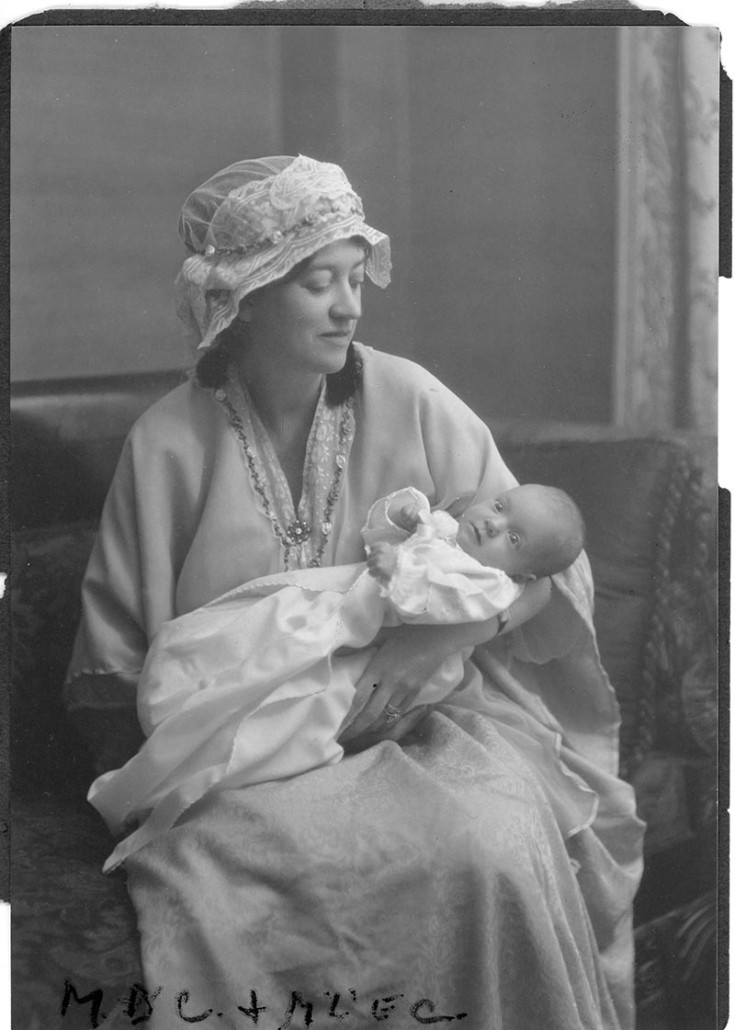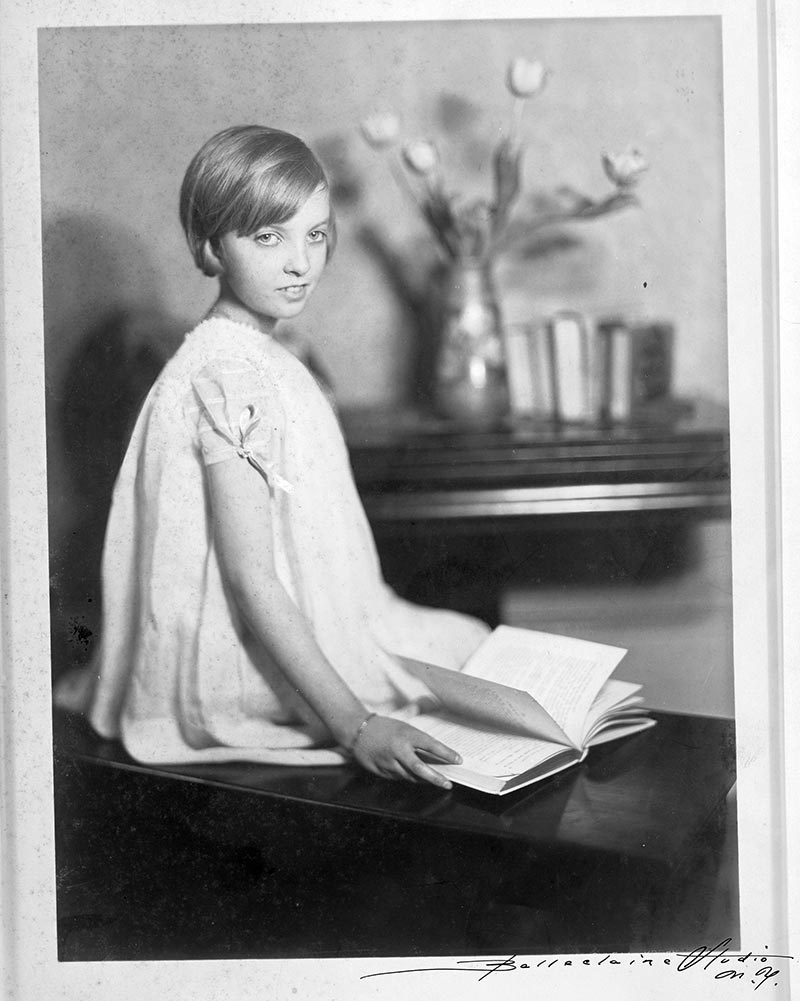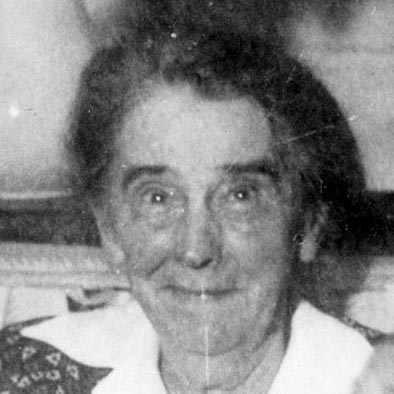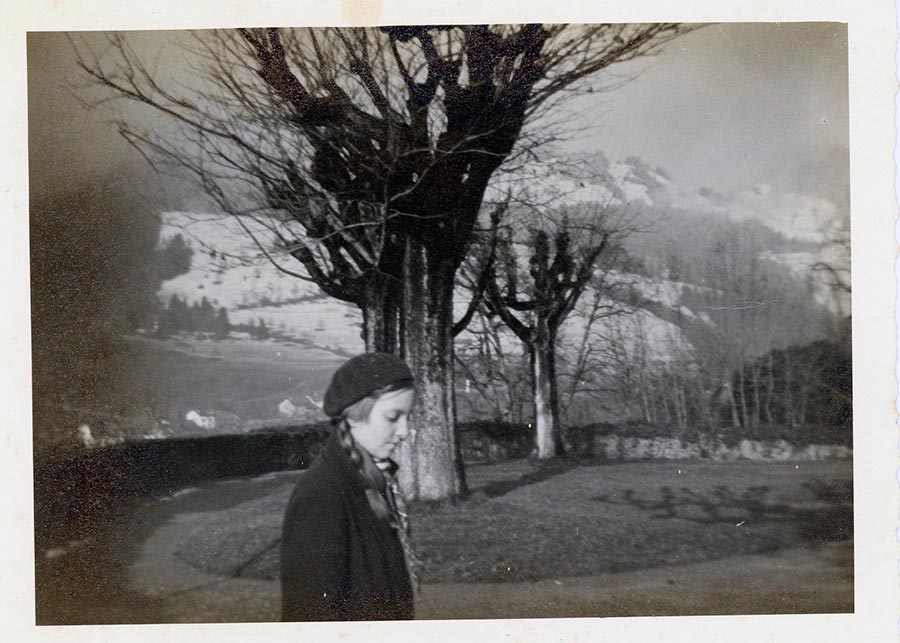Madeleine L’Engle Biographical Sketch / Page 1 of 4
One hundred years ago, in the pre-dawn hours of November 29, 1918, Madeleine L’Engle’s mother hastily scrawled this letter to her husband, a lieutenant stationed in France: “Dearest Husband, My labor has come. I am going now to the hospital. How I long for you.”
Later that day, she gave birth to the child for whom she had yearned for 11 years, a baby girl who would grow up to become one of the most beloved American authors of the 20th century.
Madeleine’s earliest and most formative memory was being awakened from sleep and carried out to the beach on a clear, cloudless night. The expansive dark sky, the bright stars, and the sound of the waves offered a glimpse of glory, a revelation of creation and its bounty. This first glimpse of the enormity and depth of the universe would contribute to Madeleine’s understanding that science and God are not at odds — a radical and, to some, even blasphemous assertion that would appear as a theme in several of her novels, including Camilla and A Wrinkle in Time.
In the New York City of her childhood, Madeleine saw little of the stars and not enough of her parents. Born on November 29, 1918, in New York City, Madeleine was the only child of two artists — her father, Charles, was a journalist, novelist, and playwright, and her mother, also named Madeleine, a pianist. Socialites with a full calendar, Charles and Madeleine often left their daughter in the care of a housekeeper, an Irish Catholic immigrant called Mrs. O.
While young Madeleine’s parents tended to their daughter’s cultural and academic education, spiritual and emotional care was Mrs. O’s domain. “Wherever she was, there was laughter and joy, the infallible signs of the presence of God,” Madeleine wrote years later.
When she wasn’t with Mrs. O, Madeleine spent hours alone in her bedroom, where she read, wrote, and dreamed. She began writing as soon as she could hold a pencil, and when she had finished all the books on her bookshelf, she composed her own stories and poems. A few years later, her father passed down his old typewriter, which became the tool she used to write her first novels.
When Madeleine was 12, her parents moved to Europe and abruptly deposited her at the Chatelard School in Switzerland, an elite all-girls boarding school where she felt abandoned, alienated, and shattered by the loss of privacy. Surrounded by cliquish and petty peers, under the watchful eyes of school matrons, Madeleine was forced to develop a new skill: an impenetrable “force field of silence” that she could inhabit like a magical cloak. “Within that force field, I could go on writing my stories and my poems and dreaming my dreams,” she said in an interview decades later. It was an effective tool, and one that would always serve her creatively.
That experience, she would later say, helped her become a writer. And what a writer she would become.
Madeleine Barnett Camp holding Madeleine L’Engle Camp, 1918
Madeleine L’Engle, circa 1926
Mrs. Mary O’Connell, circa 1952
Madeleine L’Engle in Switzerland, circa 1932




